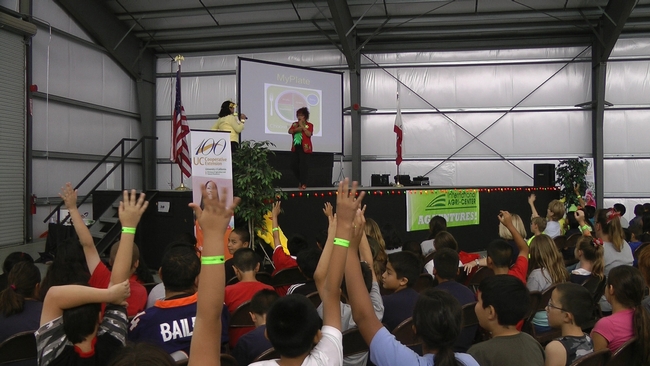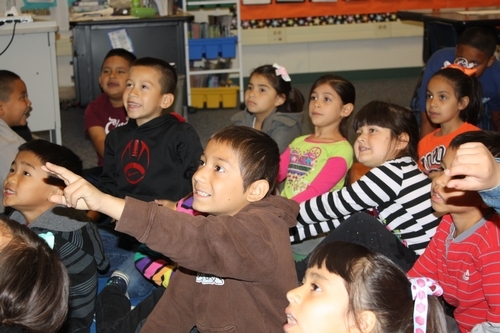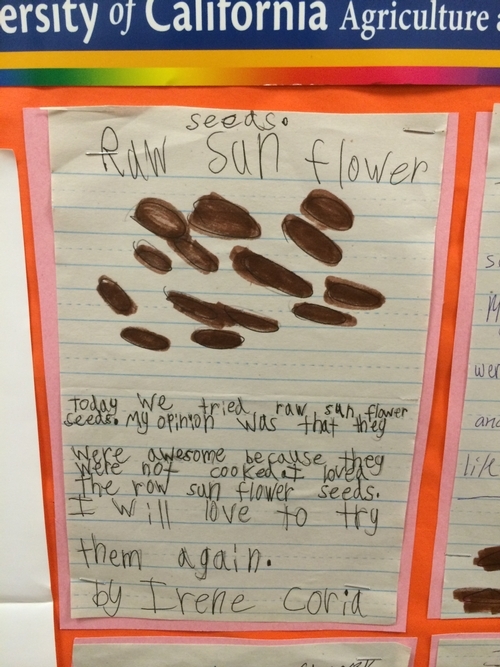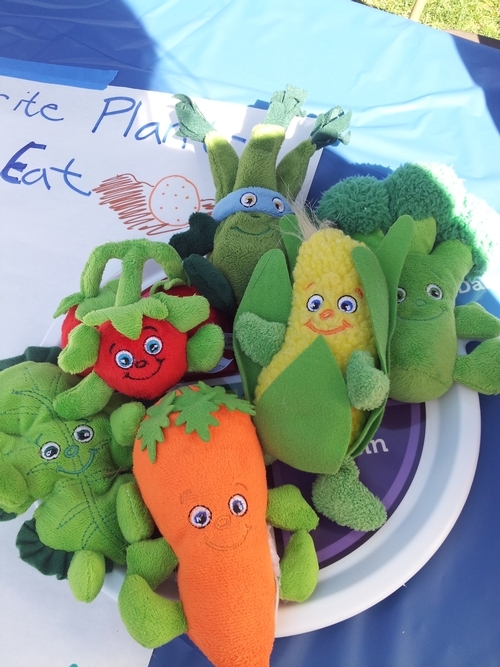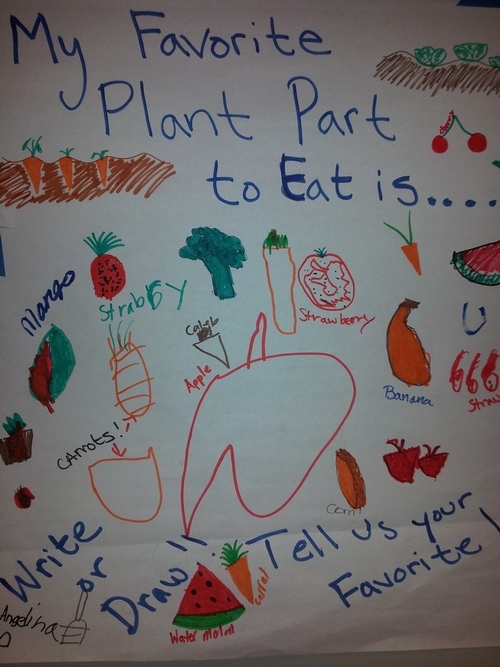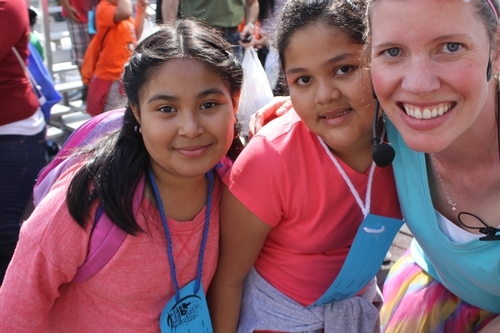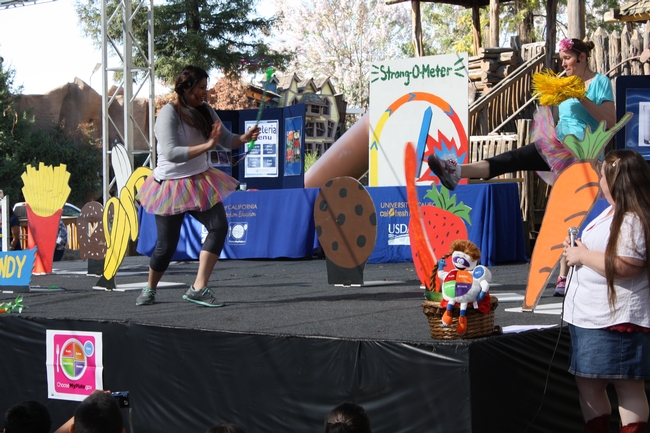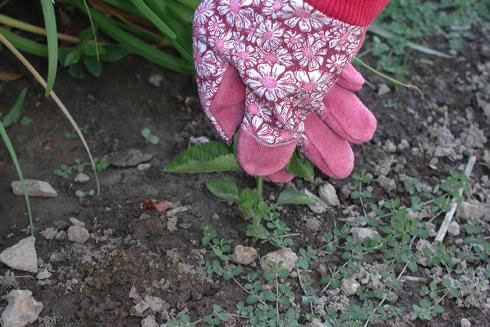UC Food and Agriculture Blogs
Detecting Subterranean Termites
Finding out that your house is infested with subterranean termites is among many homeowners' greatest fears. Mud-covered shelter tubes in the basement or crawl space may be the first sign that homeowners observe; these tubes allow termites to travel from...
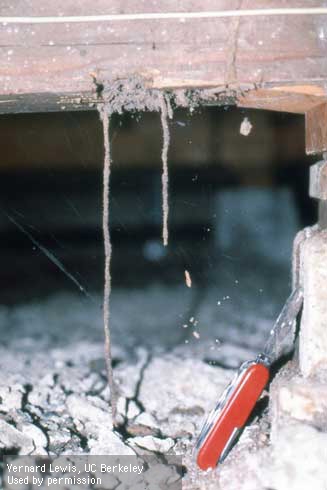
Drop tubes from wood to soil are a sign of a subterranean termite infestation.
Fourth-graders learn fast food can be healthy
A critical moment that just about every child will face in his or her lifetime takes place at the counter of a fast food restaurant. What should I order?
UC Cooperative Extension nutrition educators in Tulare County keyed in on that point in time in a play performed for 1,600 fourth-grade students at AgVentures Farm and Nutrition Day, May 23.
The play is a scripted game show titled “What Does MyPlate Say?” which encourages the children to think about the USDA's MyPlate eating guidelines, introduced to them by UC CalFresh educators in their classrooms throughout the year, when they order a fast food meal.
Five “contestants” were selected from the audience and asked to look at a food court menu. The first contestant is asked to select a fruit from the menu, and picks a yogurt parfait. Applause and a chorus of “Healthy, healthy, healthy eyes! Healthy, healthy, healthy skin!” affirm the choice.
The second student is charged with selecting a vegetable in the food court.
“French fries from MickeyC's,” he says. “Potatoes are vegetables, aren't they?”
The brightly dressed host, Sally Strawberry, admits that's true but declares french fries a “sometimes food.” Try again.
The second response, “veggie bowl from Bear Express,” is met with music, bells and applause.
Contestant three is challenged to find whole grains in the food court.
“Turkey on whole wheat from Sideway?” he responds tentatively. “Grains give us strength and energy to play!”
The fourth child to play gets a tricky question. “Can you choose a food that is high in protein but also high in fiber?” asks Sally Strawberry.
“Bean burrito from Beeanie Bell,” the child chimes.
“Muy rico,” Strawberry says. “We now have a fruit, vegetable, whole grains and protein. We just need a drink.”
“Milk, from any place,” the last child says.
See scenes from 2014 AgVentures in Tulare County in the one-minute video below:
At the end of the school year, we celebrate success
As the school year comes to a close, the schools we work with are humming with end of the year festivities. Students are looking forward to summer break, but always ask if we will be on campus teaching nutrition next school year. The answer is an enthusiastic yes!
As we say our temporary goodbyes for the summer, we've been reflecting on all of the wonderful experiences we've had. UC CalFresh staff really enjoy collaborating with teachers dedicated to helping children and families build healthier lifestyles. It's a joy to see children learn to make healthier choices over the school year.
Here are some of the highlights from our work in community nutrition education that we couldn't wait to share!
Teaching Yokomi elementary students how to build a healthy body
Trying new foods at Columbia elementary
Learning about edible plant parts at Sunshine Day
Teaching 3rd graders to choose "anytime" foods at Farm and Nutrition Day
The above images capture just a glimpse into the exciting world of nutrition education. This year we've celebrated alongside parents who have earned a certificate in our class series, helped establish nutrition corners to promote healthy eating, and so much more! We can't wait to see what next school year holds!
To learn more about the nutrition education happening in Fresno County, visit the UC CalFresh blog.
Know Your Thrips
Are the leaves on your plant stippled or silvered and covered with small black dots of excrement? This damage could be caused by thrips, which are tiny, slender insects with fringed wings. Thrips may also pucker or gall leaves and scar flowers or fruit....
Weeding: obstacle or opportunity?
Possibly the most distasteful task for gardeners is weeding. My UC ANR colleagues spend a good deal of time on the science of weed management, which represents a significant challenge for school, home and community gardeners (and for larger-scale agricultural producers). The UC ANR Master Gardener Program has excellent suggestions for school, home and community gardeners about how to reduce weeds.
This growing season, I've taken a more philosophical approach to weeding. It's all about falling in love with gardening, again, every time I work in one. You take the good stuff – vegetables and flowers – along with the weeds.
Most of my professional life has been spent in garden-based education: the practice of it, the teaching of it, and the history of it. When my daughter was younger, I spent six years as a garden volunteer for an elementary school. I moved on to working with middle schoolers, and have worked with high school students to plan and implement garden projects. I've also worked with community gardeners. My professional (and also a highly personal) mission is this: “A Garden for Everyone. Everyone in a Garden.”
Recently, I've found great joy in helping my church begin a congregational gardening project. It's a small and simple effort, but it has the wonderful feel and rhythm of summertime: longer days, a more leisurely pace, casual and unplanned meetings with new friends in the garden, and the feeling that there is more time to focus on tasks.
I live in an area where we are blessed with the ability to garden year round, but summer gardening has a particular feel to it that evokes wonder and memories of other summer gardens. (Cupping in my impossibly small hand a sun-warmed tomato grown in my grandparent's garden; eating that tomato with them that night at supper with cornbread. A summer I was in high school, when I grew watermelons in the desert; it took a lot of water, and all sorts of creatures liked the vines. Container gardening with my husband on the back stoop of our first small apartment. Helping my daughter plant carrot seeds and holding her small hand in mine after, the way older hands held mine).
Our congregational garden is tucked away behind a gate and a block wall, a small oasis of quiet in what in recent years has become a busy urban neighborhood. It's a good sunny spot, a great place to grow vegetables . . . and weeds. Saturday morning, I arrived early to beat the heat and pull a few weeds. I was somewhat dismayed when I surveyed how quickly they'd proliferated. Truth: overwhelmed.
But I got down to it and focused on weeding, pulling one at a time. My busy mind began to slow down. Alone in the garden, I listened to the sound of birds, the muffled city traffic and got some much needed exercise. Weeding provided an opportunity to reflect, to look at how the garden is progressing, to ponder about how we might grow our efforts, to consider that the pace of garden development is a season (not a day), and to anticipate the harvest we will reap. Weeding also provided a quiet time for me to think about what I want to accomplish over the summer months. At the end of an hour, I felt a sense of accomplishment and peace. And I realized that the weeds had not been an obstacle, but rather, had provided an opportunity for me to just be in the moment.
We plant gardens, and they produce wonderful things for us. Invariably, they also produce weeds. Whether we view them as obstacle or opportunity is our choice.
The author's latest book, Sowing the Seeds of Victory: American Gardening Programs of World War I, is available on the McFarland Publisher's website. Anyone who orders the book can message Hayden-Smith via her website, http://rosehayden-smith.com, to receive a signed WWI-design bookplate.



